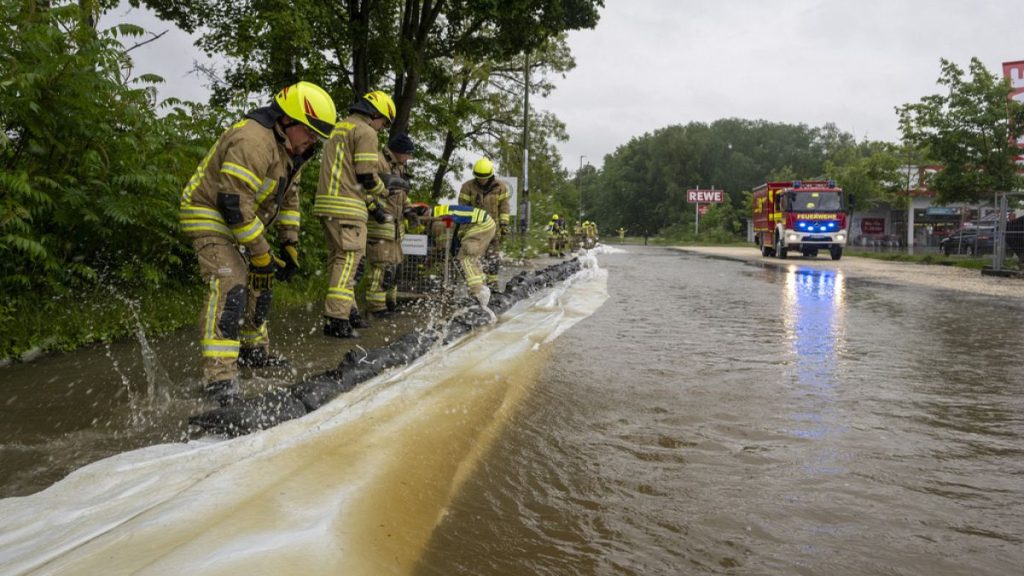Several regions in Germany, including Southern Germany, are experiencing heavy rain and flooding, prompting authorities to declare a state of emergency in Augsburg. The highest flood warnings have been issued for western Swabia, the Upper Allgäu, and Upper Bavaria. Water levels are rising rapidly in several communities, with Fischach and Langenneufnach expected to be particularly affected. Additionally, the Lake Constance region is also at risk of flooding, leading to the evacuation of around 1,300 people in Meckenbeuren, Baden-Württemberg. Rivers such as the Danube, Rhine, and Neckar are also being closely monitored for potential bursting.
The floods in Germany are considered rare occurrences, happening only once every 50 to 100 years. The current situation has necessitated significant evacuations and emergency measures to keep people safe. The communities in the affected areas are bracing themselves for a further rise in water levels in the coming hours. Authorities are working around the clock to manage the crisis and ensure the safety of residents. The risk of potential flooding extends beyond the current areas impacted, with other regions on the Danube and its tributaries also under observation for rising water levels.
In Italy, specifically in the north-east, heavy rain and flooding have led to the disappearance of three young people who were stranded on a small island in the Natisone river. The individuals called for help as the water level rose rapidly due to the torrential rain, but they are now reported missing. A search operation is underway to locate them and ensure their safety. The extreme weather conditions in Italy have not only affected these individuals but have also led to widespread disruption and damage in the region.
The impact of the heavy rainfall and flooding in both Germany and Italy is significant, with hundreds of people having to leave their homes and some individuals reported missing. The adverse weather conditions have caused chaos and destruction in the affected areas, prompting emergency responses from authorities to manage the situation. As the water levels continue to rise and more regions are at risk of flooding, the priority remains on safeguarding lives and ensuring the safety of residents in vulnerable areas. The communities facing the brunt of the flooding are receiving support and assistance to deal with the aftermath of the natural disaster.
The current situation in Germany and Italy serves as a reminder of the unpredictability and force of nature, as well as the importance of preparedness and swift action in the face of natural disasters. Climate change has been linked to the increase in extreme weather events around the world, including heavy rainfall and flooding. It is crucial for governments, communities, and individuals to prioritize resilience and adaptation measures to mitigate the impact of such events and protect lives and property. The recent floods highlight the need for effective disaster management strategies and investments in infrastructure to better cope with similar situations in the future.
As authorities work to address the immediate challenges posed by the heavy rain and flooding, efforts are also underway to assess the long-term implications and implement measures to prevent or reduce the impact of future natural disasters. The collective response to the current crisis in Germany and Italy underscores the importance of coordination, communication, and collaboration at local, national, and international levels. By working together and learning from past experiences, communities can build resilience and adaptive capacity to minimize the devastation caused by extreme weather events. Ultimately, the goal is to protect lives, livelihoods, and ecosystems from the growing threat of climate-related disasters.


